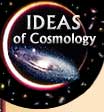
|
|
 |
Who
Was George Gamow? |

|
|
|
|
George
Gamow (1904-1968)
He was born in Odessa, grew up in revolution and war, and studied cosmology under Alexander Friedmann at the University of Leningrad. After completing his PhD in 1928, Gamow worked on quantum mechanics at Göttingen, Copenhagen, and Cambridge. He solved a major puzzle and pointed toward new technologies by explaining how an alpha particle (two protons and two neutrons, essentially a helium atom stripped of its electrons) can "tunnel" out of an atomic nucleus. Gamow was called back to the Soviet Union in 1931, but he was unhappy there. He used permission to attend a conference in Brussels in 1933 to escape to the United States, where he took a position at George Washington University in Washington, D.C. He was not cleared to work on the Manhattan Project, but later participated briefly in the development of the hydrogen bomb. Gamow introduced nuclear theory into cosmology and laid the foundations for research into the formation of elements in a big bang. |
||
Copyright ©. Brought to you by the Center for History of Physics, a Division of the American Institute of Physics |
|
|||||